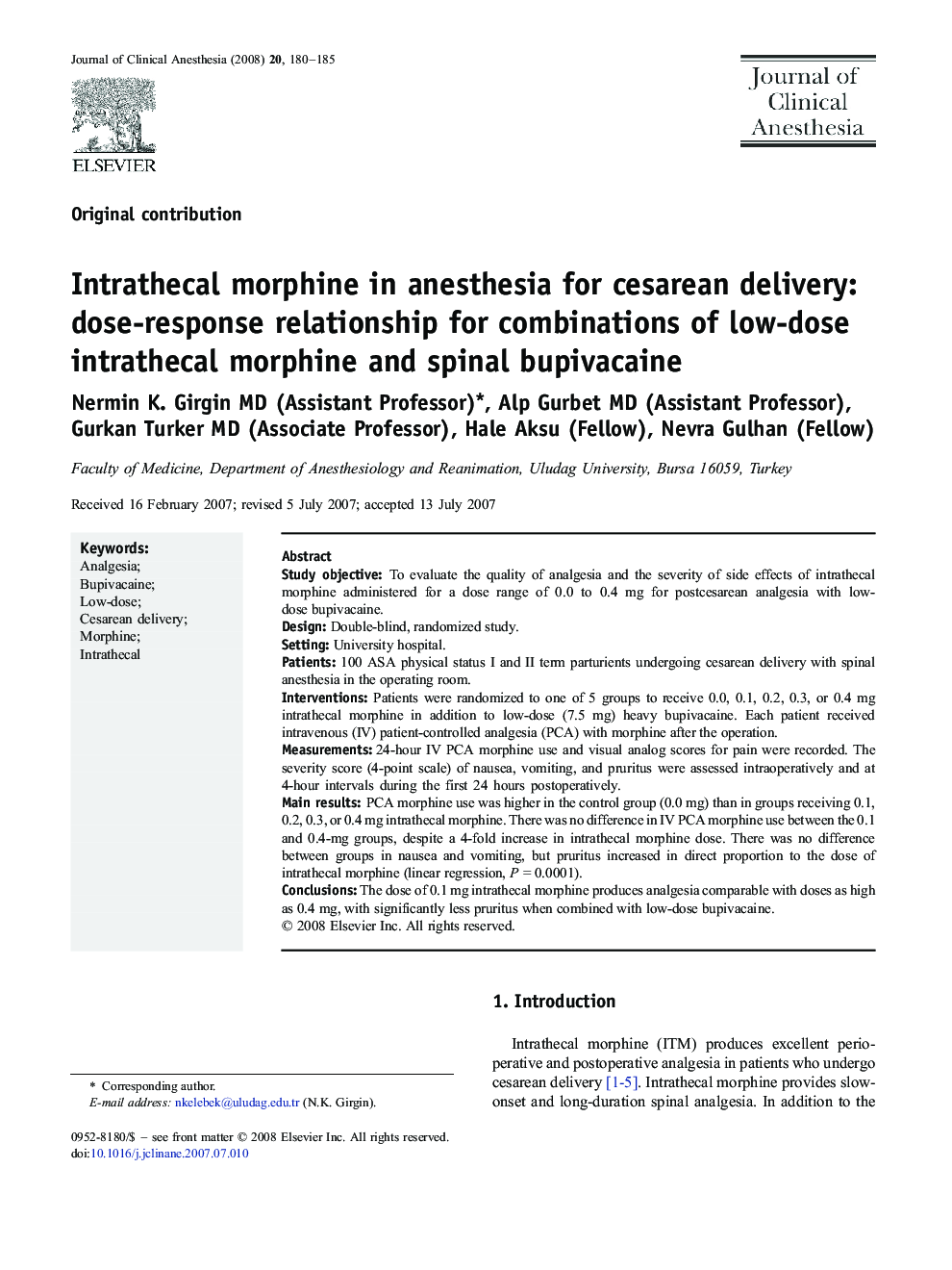| Article ID | Journal | Published Year | Pages | File Type |
|---|---|---|---|---|
| 2763578 | Journal of Clinical Anesthesia | 2008 | 6 Pages |
Study objectiveTo evaluate the quality of analgesia and the severity of side effects of intrathecal morphine administered for a dose range of 0.0 to 0.4 mg for postcesarean analgesia with low-dose bupivacaine.DesignDouble-blind, randomized study.SettingUniversity hospital.Patients100 ASA physical status I and II term parturients undergoing cesarean delivery with spinal anesthesia in the operating room.InterventionsPatients were randomized to one of 5 groups to receive 0.0, 0.1, 0.2, 0.3, or 0.4 mg intrathecal morphine in addition to low-dose (7.5 mg) heavy bupivacaine. Each patient received intravenous (IV) patient-controlled analgesia (PCA) with morphine after the operation.Measurements24-hour IV PCA morphine use and visual analog scores for pain were recorded. The severity score (4-point scale) of nausea, vomiting, and pruritus were assessed intraoperatively and at 4-hour intervals during the first 24 hours postoperatively.Main resultsPCA morphine use was higher in the control group (0.0 mg) than in groups receiving 0.1, 0.2, 0.3, or 0.4 mg intrathecal morphine. There was no difference in IV PCA morphine use between the 0.1 and 0.4-mg groups, despite a 4-fold increase in intrathecal morphine dose. There was no difference between groups in nausea and vomiting, but pruritus increased in direct proportion to the dose of intrathecal morphine (linear regression, P = 0.0001).ConclusionsThe dose of 0.1 mg intrathecal morphine produces analgesia comparable with doses as high as 0.4 mg, with significantly less pruritus when combined with low-dose bupivacaine.
